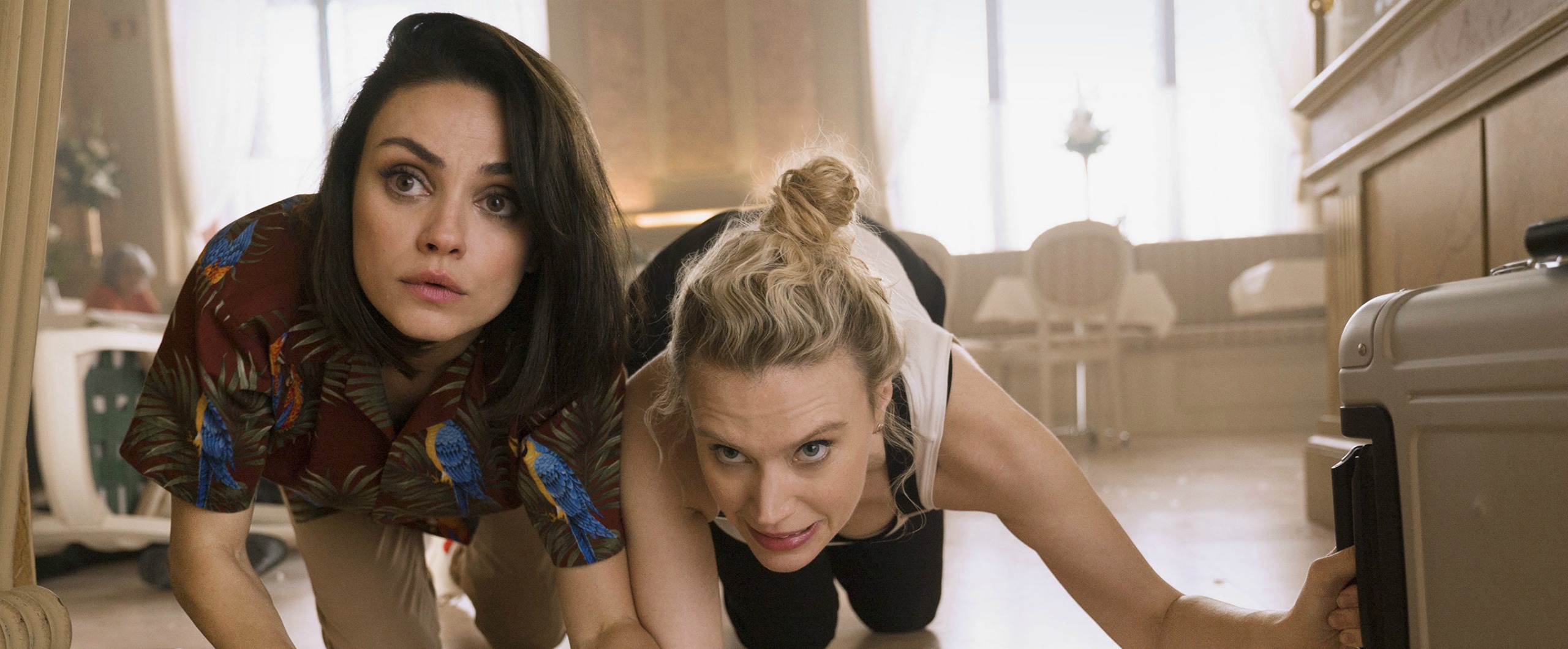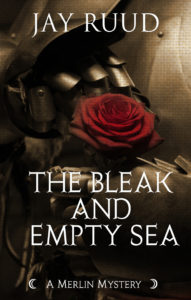The Spy Who Dumped Me
Susanna Fogel (2018)
[av_image src=’http://jayruud.com/wp-content/uploads/2014/09/SusannTennyson.jpg’ attachment=313′ attachment_size=’square’ align=’left’ animation=’left-to-right’ link=” target=” styling=” caption=’yes’ font_size=” appearance=’on-hover’]
[av_textblock size=” font_color=” color=”]
Whether it was planned or not, the opening of director Susanna Fogel’s new comedy/spy-thriller The Spy Who Dumped Me just one week following the opening of the latest Mission: Impossible flick seems like a brilliant marketing move. One week you thrill to the nonstop action and kicks of the traditional spy-thriller, and the following week you go to see a parody of the genre that makes you see, and laugh at, the holes that have always existed in the men-only macho club that spy films have always been, dating back to the beginning of the Bond era in 1961. The title’s allusion to the classic 1977 Roger Moore Bond classic The Spy Who Loved Me seems to trumpet the film’s intent, 41 years later, to undercut the patriarchy’s stranglehold on the genre. But Fogel’s script, cowritten with David Iserson (best known as a Saturday Night Live writer), does little to send up the genre itself, pairing Mila Kunis and Kate McKinnon as comically amateur secret agents. Mainly it makes them look out of place and overmatched in this mysterious and dangerous world. In this sense Paul Feig’s 2015 Melissa McCarthy vehicle Spy did a better job of putting a woman—albeit one who also had a pretty steep learning curve—into the driver’s seat of that Aston Martin DB5.
The hybrid nature of the movie causes some problems, as the two genres don’t always mesh well, as if the film doesn’t know what it wants to be when it grows up. There are times, for instance when the violence becomes intense but still seems as if it’s being played for laughs, as when a cab driver on meth tries to drive the two women away from their deadly pursuers: The ensuing violence was supposed to be funny, as far as I could tell, but it wasn’t, since we had been amused by, and were therefore sympathetic with, the cabbie’s character. On the other hand, why is it simply assumed that any joke about diarrhea must be funny? It’s not.
There is, however, plenty in this movie that is funny. Some of it is pure slapstick, like McKinnon’s forced trapeze act late in the film. Some is sheer absurdity, like the scene in which the fleeing Kunis and McKinnon try to escape their pursuers by confiscating an older couple’s car, which it turns out has a stick shift that neither knows what to do with, and which they end up driving very slowly into a newsstand. And some involves verbal wit and plays on words, a la Groucho Marx, as in the scene in which a slimy and pretentious host who seems to be hitting on McKinnon asks her “Are you a lover of Balzac?” and she answers, “Less and less with every experience.”
The plot begins in a neighborhood bar at a birthday party for Audrey (Kunis), which is being thrown for her by Morgan (McKinnon). Audrey isn’t having a particularly good time because, as you might have guessed, her boyfriend, an NPR podcaster named Drew, has just dumped her—and in a text message no less, adding insult to injury. What a sleaze-ball, right?
We also see Drew (Justin Theroux of Star Wars: The Last Jedi), dashing across an unpleasant- looking neighborhood of Vilnius, Lithuania, dodging bullets and killing anybody who gets in his way. Turns out he’s actually in the CIA. This might explain why he hasn’t been answering her texts.
At her birthday party, though. Morgan has convinced Audrey that she needs to stop brooding over this guy and that they need to burn everything the loser has left back in her apartment—including his second-place fantasy football league trophy. This text message somehow gets Drew’s immediate attention.
Turns out there’s something really important in that trophy, something that many people are ready, willing and eager to kill over. What it is doesn’t really matter—this is a McGuffin in the classic Hitchcockian sense: basically a device that is simply used to trigger the plot and has little or no importance of its own. But Drew returns in order to save his second-place trophy from the bonfire of the vanities (why if he’d left something so important with Audrey would he have broken up with her so cavalierly, you may well ask. But more on that later). Unfortunately, Drew brings a lot of baggage with him in the form of people wanting to kill him. So he’s shot and killed almost immediately after showing back up in Audrey’s place, and with his dying breath he entrusts to her his precious second-place trophy, telling her she needs to bring it to a certain restaurant in Vienna where apparently thousands of innocent lives depend on her being able to deliver it to Drew’s contact, Vern. “Trust no one!” he tells her with his last gasp.
And so Audrey and Morgan are off for Vienna, on the run from a variety of pursuers, including CIA agents Sebastian (Sam Heughan of TV’s Outlander)—who may or may not be Drew’s contact—and his pretentious partner Duffer (Hasan Minhaj of TV’s The Daily Show)—who has a tough time getting through a conversation without mentioning his time at Harvard. More scary is Nadedja (Ukrainian actress Ivanna Sakhno of Pacific Rim: Uprising), a former Olympic gymnast turned fashion model/assassin, who comes after them like some Terminator-style robot of destruction, but one whose monomaniacally lethal quest is nearly derailed by the way Audrey and Morgan reveal one another’s most intimate secrets as only best friends can. Less successful is the inclusion of Gillian Anderson in the cast, promoted from the X-Files to a managerial post in the CIA. She has almost nothing to do other than look bemusedly at McKinnon, which seems a waste of her talents.
As in the typical Bond-Bourne-Ethan Hunt film, the two fledgling spies continue to run, chase, and kill through a plethora of exotic European venues—Berlin, Paris, and in a clever twist, Prague, site of the first Mission: Impossible film, to which it alludes with a noteworthy aerial shot of the Charles Bridge, site of the first major plot twist of that franchise-launching movie. But the film’s greatest weakness is the fact that all these different venues are essentially just backdrops for discrete scenes that play like Saturday Night Live skits intent on maximizing the laughs within the set piece itself, but unconcerned with connecting coherently with the rest of the scenes. And like Saturday Night Live itself, the writers seem to be determined to fill the time slot (in two hours here instead of SNL’s 90 minutes), and so they just keep filling in with more set pieces even when all their best jokes are spent. The film is overlong and the plot is disconnected. As set pieces, the scenes work fine. As a coherent story, the film falls short.
There have been terrific comedies that had incoherent plots. The Marx Brothers come to mind, particularly the classic Duck Soup, which is no more than vaguely-connected set pieces. But of course you were watching the Marx Brothers. McKinnon and Kunis may not be in that category, at least not yet, but their performances, especially the frenetic McKinnon’s, are the strongest part of the movie, and in the end they do manage to prove that women can be just as competent as men in the spy business. Just think what they could have done with a better script. Two Jacqueline Susanns and half a Tennyson for this one.
NOW AVAILABLE:
If you like these reviews, you might enjoy Jay Ruud’s most recent novel, now available from the publisher at https://encirclepub.com/product/the-bleak-and-empty-sea/. Also available from Amazon or Barnes and Noble.
When word comes to Camelot that Sir Tristram has died in Brittany of wounds suffered in a skirmish, and that his longtime mistress, La Belle Isolde, Queen of Cornwall, has subsequently died herself of a broken heart, Queen Guinevere and her trusted lady Rosemounde immediately suspect that there is more to the story of the lovers’ deaths than they are being told. It is up to Merlin and his faithful assistant, Gildas of Cornwall, to find the truth behind the myths and half-truths surrounding these untimely deaths. By the time they are finally able to uncover the truth, Gildas and Merlin have lost one companion and are in danger of losing their own lives.
Order from Amazon here: https://www.amazon.com/Bleak-Empty-Sea-Tristram-Mystery/dp/1893035735/ref=sr_1_1?s=books&ie=UTF8&qid=1503328086&sr=1-1&keywords=Bleak+and+Empty+Sea
Order from Barnes and Noble here: https://www.barnesandnoble.com/w/the-bleak-and-empty-sea-jay-ruud/1126958139?ean=9781893035737


